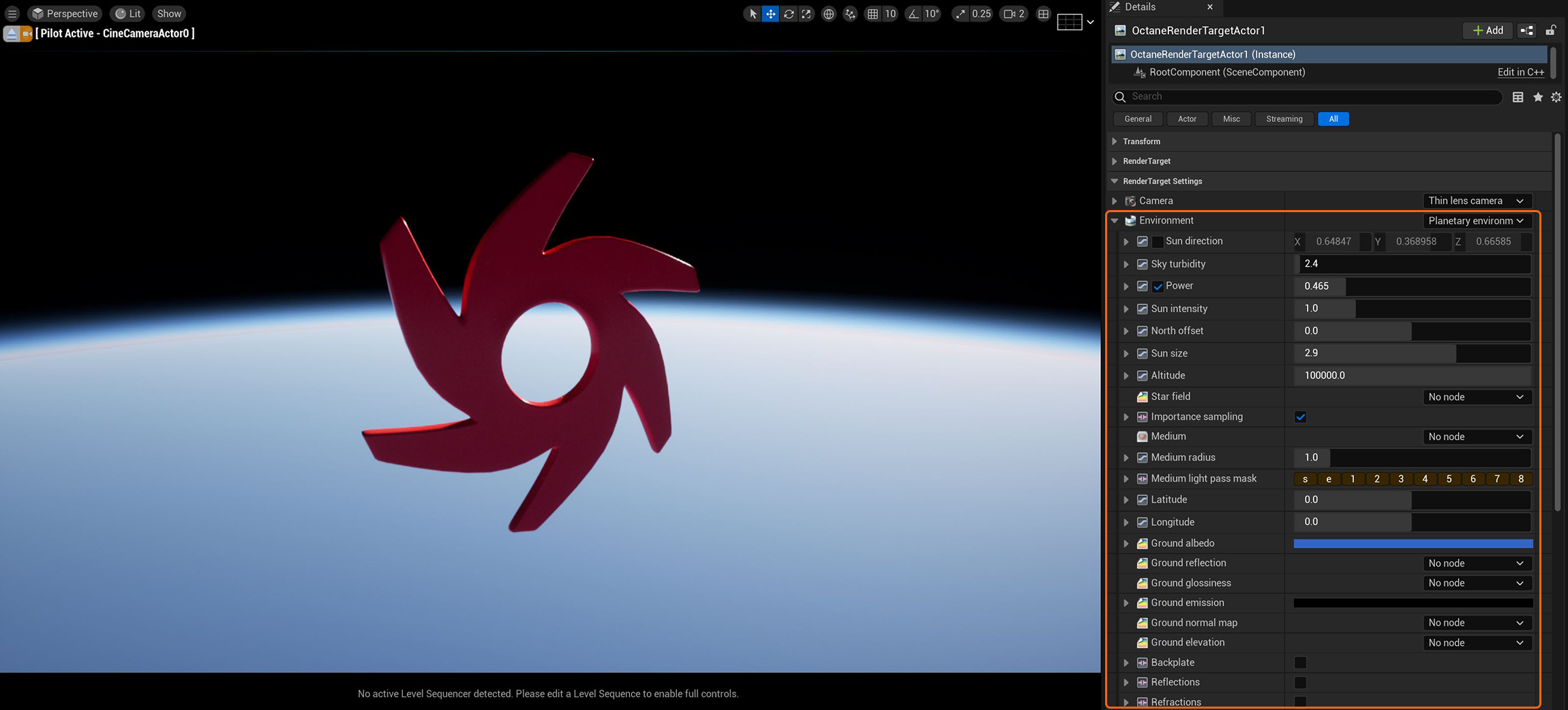
The Planetary environment is a flexible Nishita sky model. It is useful for rendering scenes viewed from outer space (figure 1). To make these effects visible, the camera needs a very high altitude value, as it moves to outer space to view the expansive horizon of the planetary body. It takes into account the conditions within a planetary body's atmosphere and beyond. Instead of a single ground color and a sky/sunset color, there is a planetary surface that reflects and emits light. This node extends the environment's medium (volume rendering and subsurface scattering) with an atmospheric scattering through the planetary body's atmosphere. Here, the atmosphere is perceived as a layer of gas surrounding a planetary mass, and it is held in place because of gravity, so as the light travels into atmosphere either from the outer layer to the ground or from a light source within the atmosphere, the atmosphere's density is sampled along the ray at regular intervals, resulting in an amount of scattering based on the atmosphere's density.
The Planetary environment is accessible by clicking on the Octane Render Target Actor, going to the Details panel, and clicking on the Environment rollout.

Figure 1: A scene rendered using the Planetary Environment, where the camera is set at a very high altitude
Sun Direction - This parameter is deactivated by default grayed out due to the sun direction being determined by either the dominant or selected light actor in the scene.
Turbidity - Adjusts the sharpness of the sun light's shadows. Low values create sharp shadows similar to a sunny day, and high values diffuse the shadows similar to a cloudy day.
Power - Adjusts the light's strength. This affects the image's overall contrast and exposure levels.
Sun Intensity - Adjusts the scale factor for the sun and can be used to adjust the relative power of the sun compared to the sky.
North Offset - Adjusts the scene's actual North direction. This is useful for architecture visualization to ensure the sun's direction to the scene is accurate.
Sun Size - Controls the size of the sun disk that's visible in the scene.
Altitude - The camera's altitude. Set this to a very high value in order to view the expansive horizon of the planetary body.
Star Field - Conveys star fields behind the planet.
Importance Sampling - This toggles the importance sampling of the Sky texture, similar to the importance sampling in the Texture environment.
Medium - This parameter accepts an AbsorptionDefines how fast light is absorbed while passing through a medium., ScatteringDefines how fast light gets scattered when traveling through the medium., or Volume medium node to create volume or fog effects across the scene. More information can be found in the Volume MediumsThe behavior of light inside a surface volume described by scatter, absorption, and transmission characteristics. topic under the Effects category in this manual.
Medium Radius - Adjusts the Medium's scale.
Latitude - The latitude coordinate for the camera's current position.
Longitude - The longitude coordinate for the camera's current position.
Ground Albedo - The planet's surface Texture map.
Ground Reflection - The planet's specular Texture map.
Ground Glossiness - The planetary glossiness.
Ground Emission - The planet's surface Texture map at nighttime.
Ground Normal Map - Normal map on the planet.
Ground Elevation - Elevation map on the planet.
Backplate - This makes the visible environment behave as a background plate.
Reflections - Allows the visible environment to be visible in the material's reflections.
Refractions - Allows the visible environment to be visible in the material's refractions.